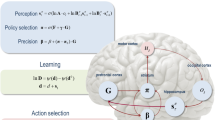Abstract
Like the numbers in a sudoku puzzle, a lexeme’s principal parts provide enough information–but only enough–to deduce all of the remaining forms in its paradigm. Because principal parts are a distillation of the implicative relations that exist among the members of a lexeme’s paradigm, they afford an important (but heretofore neglected) basis for typological classification. We recognize three logically distinct sorts of principal-part systems that might be postulated for a given language: static, adaptive, and dynamic. Focussing for present purposes on dynamic systems, we propose five crosscutting criteria for the typological classification of principal-part systems. These criteria relate to (i) how many principal parts are needed to determine a lexeme’s paradigm; (ii) whether distinct lexemes possess parallel sets of principal parts; (iii) how many principal parts are needed to determine a given word in a lexeme’s paradigm; (iv) what sort of morphological relation exists between a principal part and the forms that it is used to deduce; and (v) whether lexemes’ nonprincipal parts are inferred from their principal parts in the same way from one inflection class to another. Drawing on these criteria, we propose a novel classification of a range of typologically diverse languages.
Similar content being viewed by others
References
Ackerman, Farrell, & James Blevins. (2006). Paradigms and predictability, paper presented at the Workshop on WP morphology, Linguistic Society of America Annual Meeting, Albuquerque, New Mexico.
Anderson Stephen R. (1992). A-morphous morphology. Cambridge University Press, Cambridge
Bhaskararao Peri. (1980). Koṇekor: A Dravidian language. Deccan College Postgraduate & Research Institute, Pune
Blevins James. (2006). Word-based morphology. Journal of Linguistics 42: 531–573
De Vries, James A., & Sandra A. De Vries. (1997). An overview of Kwerba verb morphology. Papers in Papuan Linguistics 3 (Pacific Linguistics, A-87), 1–35.
Finkel, Raphael, & Gregory Stump. (2007). Principal parts and degrees of paradigmatic transparency. Technical Report No. TR 470-07, Department of Computer Science, University of Kentucky.
Jakobi Angelika. (1990). A Fur grammar. Helmut Buske Verlag, Hamburg
Kimball Geoffrey D. (1991). Koasati Grammar. University of Nebraska Press, Lincoln and London
Kutsch Lojenga Constance. (1994). Ngiti: A central-sudanic language of Zaire [Nilo-Saharan Linguistic Analyses and Documentation, vol. 9]. Rüdiger Köppe Verlag, Köln
Lanman Charles Rockwell. (1884). Sanskrit reader. Harvard University Press, Cambridge, MA
Matthews P.H. (1972). Inflectional morphology. Cambridge University Press, Cambridge
Stump Gregory T. (2001). Inflectional morphology. Cambridge University Press, Cambridge
Stump Gregory T. (2006). Heteroclisis and paradigm linkage. Language 82: 279–322
Stump, Gregory, T. (2007). A non-canonical pattern of deponency and its implications, to appear In Matthew Baerman, Greville Corbett, Dunstan Brown & Andrew Hippisley (Eds.), Extended deponency. British Academy and Oxford University Press.
Wurzel Wolfgang Ullrich. (1989). Inflectional morphology and naturalness (tr. by Manfred Schentke). Kluwer, Dordrecht
Zwicky Arnold M. (1985). How to describe inflection. In : Niepokuj M., VanClay M., Nikiforidou V., Feder D. (eds) Proceedings of the Eleventh Annual Meeting of the Berkeley Linguistics Society. Berkeley Linguistics Society, Berkeley, CA, pp 372-86
Author information
Authors and Affiliations
Corresponding author
Rights and permissions
About this article
Cite this article
Finkel, R., Stump, G. Principal parts and morphological typology. Morphology 17, 39–75 (2007). https://doi.org/10.1007/s11525-007-9115-9
Received:
Accepted:
Published:
Issue Date:
DOI: https://doi.org/10.1007/s11525-007-9115-9



